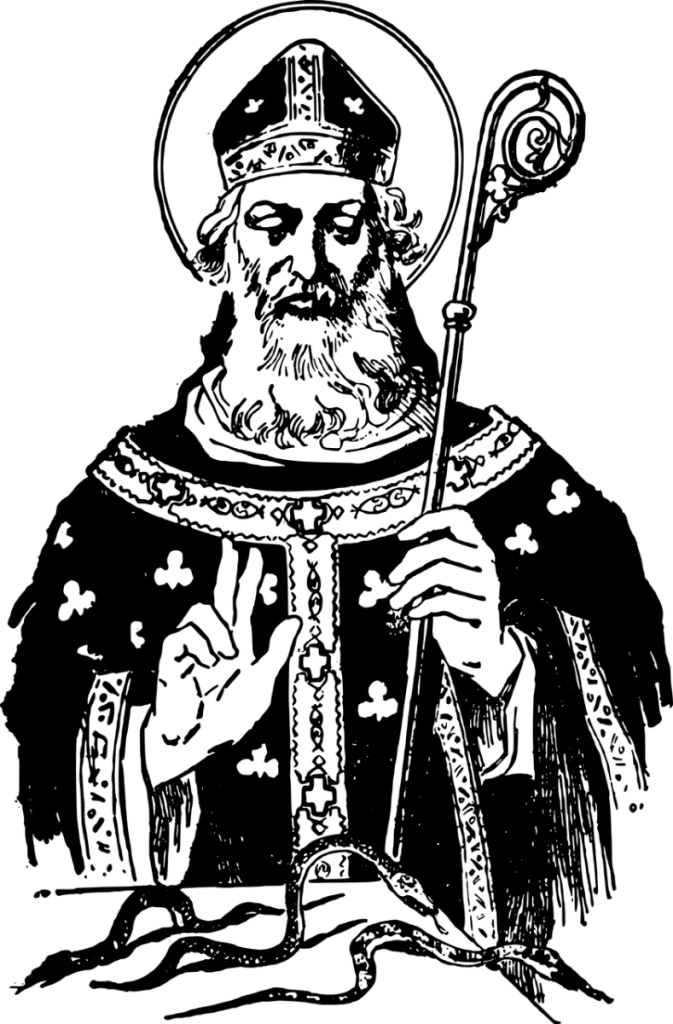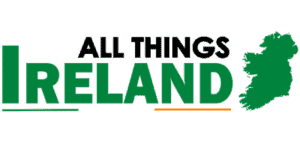
The Shamrock (Seamróg in Gaelic) is an iconic symbol long associated with Ireland (Eire in Gaelic). The plant has long been associated with the Emerald Isle, featured on the national emblem of Ireland and frequently used to represent The Emerald Isle’s heritage. But what is the history behind the iconic image of the Shamrock and why is it such a powerful representation of Ireland’s culture?
The most widely accepted explanation for the Shamrock’s association with Ireland comes from a story about Saint Patrick, the country’s patron Saint. According to the tale, St. Patrick used the three-leafed plant to explain the Holy Trinity to pagan converts. From there, it was adopted as a symbol of The Emerald Isle’s identity, a reminder of the impact of Christianity on the Emerald Isle and the great faith that united the people of Ireland like little else.
But more than just a reminder of shared faith, the Seamróg also served as a symbol of Eire’s independence. Throughout history, the people of Eire were subjugated and oppressed by foreign rulers, and the Seamróg became a symbol of resistance and rebellion. Wearing Seamróg on one’s clothing or displaying it proudly was seen as an act of defiance. This long history of resilience and dedication to a nationally unique culture and identity has helped to solidify the Shamrock’s legacy as a symbol of Irishness.
Beyond its historical associations, the Seamróg is also a symbol of luck. For centuries, the three-leafed plant has been associated with good fortune, especially when worn as a charm in one’s pocket or pin on one’s clothing. This belief dates back to ancient times and is rooted in the belief that the number three and the three-leafed plant bring luck, hope and fortune. This positive connotation to the plant has helped to further strengthen its ties to the Emerald Isle.
The Shamrock is a symbol of hospitality. During the winter months when other plants were hard to find, the Seamróg was a readily available and reliable source of food. Early Eire settlers would eat Seamróg leaves in order to survive when times were hard. As a result, the plant was a visual reminder of The Emerald Isle’s hospitality and the warmth of the people of the island.
The Seamróg is an iconic symbol of Ireland. Its ties to Irish identity, culture and history stretch back centuries and the plant has become an internationally recognizable symbol of the Emerald Isle. Beyond the Saint Patrick story and its historical significance, the Shamrock is also a symbol of luck, resilience, rebellion and hospitality all of which are deeply enmeshed in the Eire’s identity.
The Meaning Of The Shamrock Symbol

The Shamrock symbol has great significance in Ireland, stemming from its use in Christian terms as well as a national emblem. Often known as the “Luck of the Irish”, the shamrock has become an iconic aspect of Irish culture and heritage.
The Seamróg is typically thought to have come from the 16th-century Irish legend of the saint Patrick the patron saint of Ireland. According to the legend, Patrick used the three-leaf clover in an effort to explain to the people of Ireland the concept of the Christian holy trinity a single plant with three leaves representing the three aspects of God in one. It is said that he used it to demonstrate the boundary between pagans and Christians in Ireland, where the Seamróg is a point to be regarded as the national flower of Ireland.
In more recent times, this symbolic flower has been widely used as a way to express Irish heritage, culture, and pride. Irish immigrants to the United States during the 19th century often opted to add shamrocks tattooed on their skin in order to demonstrate their pride of The Emerald Isle. Further, it is also a popular decorative symbol for pottery, carvings, and cutouts.
The true meaning of the shamrock is one of beauty and resilience. Representing the difficult past and joyous present of those in Eire, the Seamróg symbolizes the unity and resiliency of the people. It is a reminder of overcoming their challenges and finding joy in life. After years of suffering and pain, the shamrock honours the spirit of perseverance.
The Seamróg is truly an iconic symbol that is known around the world. It has moved with the Irish people as they have travelled far and wide and is a reminder of their past struggles and triumphs. Though it has a religious background, the Seamróg has achieved far more than a simple symbol of faith. To the people of the Emerald Isle, the shamrock symbolizes a unique history and culture, remarkable people, and a tremendous sense of pride and togetherness.
History Of The Shamrock Symbol

The Seamróg has long since been a part of the culture, popularized throughout the years as a result of its association with Saint Patrick. While the tradition of using the Seamróg as a symbol of the Emerald Isle is fairly recent, the plant itself has been around for much longer.
The Seamróg has quite possibly been used as a symbol in Ireland since time immemorial. While there is no tangible evidence that proves its use in Ancient Ireland, the common consensus is that the plant served as an important symbol for the Celts. It was an integral part of their Celtic tribes and was symbolically used to represent their connection to nature.
The earliest recorded use of the shamrock as a symbol of nationalism was in 1650 when the Irish Confederate Assembly adopted it as the flag of Irish people who were fighting for their independence from the British government. This decision was made due to the historic connotations associated with the shamrock, which gave it a deeper symbolic meaning.
The 18th century saw the widespread appropriation of the Seamróg as a symbol of all things Irish. This can be attributed, in part, to the popularity of Eire’s folk tales and legends, which circulated around Europe during the time. The shamrock was featured prominently in many of these stories and quickly gained traction as a symbol of Irish identity and nationalism.
By the 19th century, the shamrock had become a ubiquitous symbol of the Irish people and their culture. Its use as a representation of Ireland was further popularized by the temperance movement of the late 19th century, which utilized the shamrock as its primary symbol.
Today, the Seamróg is a worldwide icon that symbolizes Irishness. It can be seen on everything from coins and lapel pins to clothing and flags. The Seamróg is also commonly used in the celebration of St. Patrick’s Day when it’s worn by many to commemorate the day and Ireland’s heritage.
This Seamróg has grown over the centuries to become synonymous with Ireland and everything it stands for. With its intricate and deep-rooted history, the shamrock remains one of the most recognizable symbols of The Emerald Isle’s culture.
The Shamrock And Saint Patricks Day In Ireland

The Seamróg and Saint Patrick’s Day are two things inextricably linked to Ireland. Together, these symbols have become synonymous with Irish culture and history, and are the basis for distinct Irish national identity.
The Seamróg is believed to have been first used by Saint Patrick in the 5th century as a way to explain the concept of the Holy Trinity. Since then, the shamrock has become a powerful symbol of Irishness that has been featured on everything from currency to military uniforms. This symbol is observed and celebrated each year on Ireland’s national holiday, Saint Patrick’s Day.
Saint Patrick’s Day, which occurs annually on March 17, is a day dedicated to honouring Saint Patrick and Irish culture. On this day people celebrate by wearing green, the symbolic national colour of Ireland. On Saint Patrick’s Day, people all over the world host festivals, and parades, play traditional music and Eire’s sports and raise their glasses to St. Patrick and the Irish people.
One of the liveliest traditions on Saint Patrick’s Day is the annual Saint Patrick’s Day parade, a long-time tradition in most Irish towns and cities. Thousands of people come out to observe the spectacle of brightly coloured costumes, marching bands, dance performances, and floats. The parade moves its way through the streets of cities, reminiscent of ancient Celtic festivals. The line of march is often led by the shamrock, borne aloft by someone wearing a green top hat and long green coat, symbolizing the nation’s Irish heritage.
Meanwhile, in pubs and homes all over Ireland, people are raising their glasses in a toast to Saint Patrick and the people of Ireland. At the core of this tradition of drink and merriment is an appreciation of Irish culture. People raise their glasses to honour the Celtic traditions and culture, represented by the shamrock, which once flourished in Ireland but was oppressed under 400 years of English rule.
By celebrating Saint Patrick’s Day with a plate of traditional Irish food and a pint of local beer, people come together to share a common history, pride, and identity. The Seamróg and Saint Patrick’s Day are powerful reminders of Irish heritage, pride and identity. They serve as a celebration of Celtic culture and people and the nation of Ireland. Together they bring together people from all over the world in shared celebrations.
Check out some more of my articles below
24 Things to do and see in Limerick
Are You Looking For Accommodation in Clare Ireland
Recent Posts
Unraveling the Enigma: Exploring the History and Symbolism of Celtic Knots
The Origins of Celtic KnotsThe intricate artistry of Celtic knots holds a rich history that dates back centuries to the Celtic tribes of ancient times. These ancient peoples, with their strong...
Researching Budget-Friendly Accommodation OptionsWhen planning a budget-friendly trip, one of the key aspects to consider is finding affordable accommodation. Start your search by exploring options...
